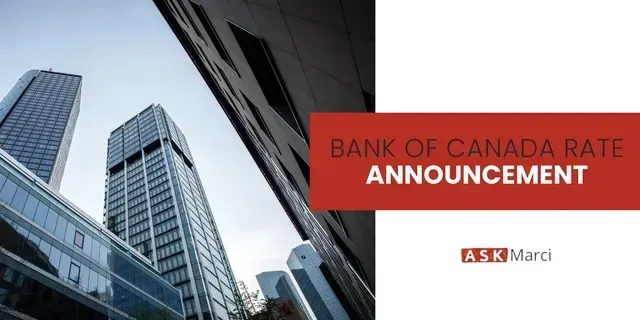Market Update: Navigating Economic Uncertainty in BC's Housing Market
Market Update: Navigating Economic Uncertainty in BC's Housing Market
Economic Outlook from Brendan Ogmundson, CMBA-BC Conference
(Following is a summary of my notes taken during Brendan’s live presentation on Tuesday April 8, 2025)
The current economic landscape is characterized by unprecedented uncertainty, according to economist Brendan Ogmundson's recent presentation at the CMBA-BC Conference. His analysis, titled "Stuck Between Stations," highlights several key factors influencing BC's housing market and broader economic outlook.
Housing Market Trends
Uncertainty has reached record highs—exceeding even 2020 levels—with a striking 600% increase in Canadians reporting concerns about job security. This uncertainty is directly impacting housing market decisions, particularly home buying intentions.
The housing inventory situation is evolving rapidly:
- Listings are accumulating steadily
- Total active listings across the province are approaching 40,000-45,000 units
- Completed but unsold new inventory has reached an all-time high
These inventory trends are expected to slow housing starts over the next 1-2 years. Current forecasts suggest housing prices will likely remain flat or potentially decrease in the near term.
Financial Stability
Despite these challenges, BC homeowners appear to be weathering the economic storm relatively well for now. Mortgage arrears and bankruptcies remain at historically low levels, though this represents an ongoing risk worth monitoring.
Interest Rate Outlook
The bond market continues to experience significant volatility, which is likely to persist in the coming weeks. As a result, lenders are expected to maintain current fixed rate offerings. The Bank of Canada is anticipated to implement one more rate cut, though timing remains uncertain due to inflation concerns related to emerging trade tensions.
Ogmundson noted that substantial rate cuts would require a dramatic increase in unemployment—to approximately 8%—which is not the current baseline expectation. Additionally, slowing population growth combined with already poor productivity metrics is expected to reduce Canada's potential GDP growth from 2% to 1.5%.
These factors may lead to a new neutral interest rate around 2.25%, with the April Monetary Policy Report potentially confirming a lowered neutral rate.
Trade Tensions and Tariffs
A significant portion of the presentation addressed the impact of escalating trade tensions, particularly with China. The effective tariff rate with China has now exceeded 40%, creating mechanical price increases throughout supply chains.
These tariffs are projected to:
- Lower economic growth
- Increase prices by at least 2.3%
- Reduce disposable income by approximately $3,000 per US household
The presentation characterized the potential economic contraction as a "Trumpcession," noting that recent trade policies resemble 18th-century mercantilism with its zero-sum mentality of maximizing exports while minimizing imports.
Impact on British Columbia
The effects of these economic headwinds will not be uniform across BC, with northern regions potentially facing greater challenges. Economic modeling suggests provincial unemployment could rise above 7%, compared to a baseline of 5% without trade tensions.
As we continue to monitor these economic developments, maintaining flexibility and caution in financial and investment decisions will be crucial in navigating this period of heightened uncertainty.
Share












